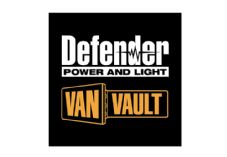UK DIY News
How To Improve Customer Experience In Retail With Smoother Checkouts

Retail is a competitive business; everything that stores do can impact how customers perceive them. This can influence their overall perception of a brand, their loyalty to a store, and the likelihood that they will return. Hundreds of touchpoints, starting before they have even set foot in the building, can influence these decisions as a customer is shopping.
One of the easiest to control and perfect is the checkout experience. It could be argued that the checkout process is the most important moment for customer satisfaction and stands out as a critical touchpoint that can have a massive impact on a customer’s journey.
A smooth, efficient checkout can leave customers happy, satisfied and confident in their trust in your store. A bad checkout experience, on the other hand, can do a lot of damage to a company’s image in a short amount of time.
Understanding how to improve customer experience in home improvement retail stores can lead to increased customer loyalty and higher sales. With satisfied customers recommending brands to friends, returning themselves and leaving great reviews in the public domain.
This article is going to take a look at the best ways retailers can upgrade their checkout experiences by understanding and addressing common pain points, leveraging technology, and monitoring implemented changes so they can be adapted while on the run.
This crucial aspect of the customer journey does not have to be difficult to perfect and could offer the highest reward-to-difficulty ratio.
So let’s dive in.
Understand Your Customers
The first stage in improving customer experience should always start with understanding who your customers are, and you’ll need more than just data to do this.
Conducting surveys and gathering feedback can be a great way to fully understand the sticking points, how things can be improved, and the way your customers are using the store, and it’s a surprisingly overlooked tool.
It’s also worth remembering that in an eclectic hardware store, you’ll have all kinds of patrons coming through the doors; home DIYers, hobbyist gardeners, professional traders, first-timers and people from many age groups and backgrounds.
Avoid pigeonholing your clientele. Instead, try to make their purchasing process as streamlined as possible; each segment of clientele will have specific needs, preferences and behaviours so try and pay attention to the little things that will have a big impact.
Having staff on hand to help with getting large or difficult items through the tills, offering the correct equipment in store to move heavy goods with ease, and installing signage to guide people to the tills that can be seen even when the customer is behind a large sheet of plywood, are all great ways to ensure your customers have what they need for a positive checkout experience.
Embrace Technology
In this modern age of technology it seems obvious that every major retailer would be using electronic till systems to complete transactions, but going one step further and installing an integrated point of sale system is the absolute best way to streamline your checkout efficiency.
Most retailers across the board are using contactless card readers, but it’s the systems that back them up that can make all the difference. They offer integrated stock management tools, analytics, ease of use, constant support, internal ordering and much more. Website usage forms a huge part of a customer's shopping habits, and having an integrated system to keep your website up to date and fully functional is a no-brainer.
One thing you may have noticed popping up in grocery and supermarkets originally, and now in hardware stores, garden centres and pretty much everywhere else, is the self-checkout machine.
The rise of these machines should be taken seriously by everyone in the retail game; do you think major superstores and national chain stores would give them so much floor space if they didn’t work?
One member of staff can monitor between 5 and 8 machines meaning that the flow of people passing through the till systems is hugely improved, people picking up odd bits and those with small shops can breeze through without any unnecessary queueing, and a whole lot of space is saved.
This gives you the chance to open up express checkout lanes, make the most of awkward spaces in your store and free up your staff to be more approachable.
Another trend that is on the rise in a big way is mobile payments, which are expected to nearly double by 2027; the likes of Apple Pay, Google Wallet and others have revolutionised the public’s ability to make quick payments wherever they are.
If you’re looking to speed up queue times, adding this as a payment option could be a great way to see results, without the relatively large expense of self-checkout machines.
Streamline the Checkout Process
We mentioned above about self-checkout machines being a great way to maximise space, but putting more thought into the layout of your existing tills and queueing corals can be a huge efficacy booster. With high-street footfall on the rise, it makes a lot of sense to ensure your tills, queueing areas and checkout zones are operating at maximum capacity.
Consider adding clearer signage and implementing ‘alleys’ that can fit the products that you sell; a hardware store selling lengths of timber, large pieces of furniture or even machinery, should allow customers to easily bring these items to the tills without the stress of getting stuck or knocking things over.
Once you’ve maximised the space in which your tills operate, try to make the steps your customers have to take as few as possible; for example, if you offer a membership or rewards scheme that requires the garnering of information in order to be set up, you should also offer the option for shoppers to checkout as a guest. Not everyone will want to be included in a membership scheme, so don’t force it.
Enhance Your Online Checkout Experience
It goes without saying that not utilising the internet to its fullest extent would be a huge mistake causing stores to miss out on huge groups of potential customers; in fact, more than half of people aged 65 and above (54%) are shopping online, busting the generational technology myth, and proving that a great online shop is just as important as a physical one.
All the more reason to include a user-friendly interface that is intuitive and straightforward to use right through to payment and completion. Don’t dilute the effect of a great e-store with a complex, multi-step, membership-only payment experience. Once people have filled their online baskets, they’re in a hurry to pay and move on to the next thing.
Give them a chance to check out as a guest or skip saving their details, in fact, try to keep the process to two steps. First, let them enter their information. Second, include a chance to review their information, basket, and card details; and that’s all you need.
Monitor and Adapt
Instituting changes is one thing, but ensuring the changes work as intended and are accepted by your customers and staff is another thing entirely. It’s also super important to be open to adjusting those changes to suit real-world circumstances, and this is where most will come unstuck. Once a new till layout has been installed, or even a new till system, just dusting off your hands and walking away is not an option.
Monitoring the changes under the pressure of a working day will reveal how successful they have been, and actually seeing the new processes being utilised will allow for the right adjustments and corrections to be made. Don’t give up if things are not working how you hoped, stick with it, keep track of the data and find a solution that works for everyone.
Surveying and getting feedback, as already discussed, is a really useful tool in this situation as well. Listen to what your customers and staff are telling you, make the most of this valuable and free insight.
It’s really important to remember that a customer's checkout experience is one of the most influential and important interactions they will have in your store, and whilst installing AI powered til-free checkouts is not a reality for most retailers, there are still things you can do that will make all the difference without breaking the bank.
The Ultimate Checkout Experience
Enhancing your customer’s checkout experience is a critical component when attempting to improve overall the customer experience; by understanding your customers’ needs, and their pain points, streamlining the checkout process, leveraging technology, and offering multiple payment options, retailers can create a smoother and more efficient checkout experience.
Following this up with continuous monitoring and adaptation based on customer feedback will only serve to improve your new additions. It’s also crucial to have people ‘on the ground’ to see the changes first-hand, which helps to ensure that the checkout process evolves with customer expectations and means you will see the improvements for yourself in your numbers, and your customer’s faces.
Retailers who prioritise refining this crucial touchpoint will be better positioned to meet the demands of today’s shoppers, and keep them coming back for more; it can sometimes be difficult to embrace change but implementing the strategies discussed in this article can significantly enhance the customer experience, turning the checkout process from a potential pain point, into a seamless and satisfying conclusion to for every shopper’s journey.
Source : Kelly Edwards
Insight DIY always publishes the latest news stories before anyone else and we find it to be an invaluable source of customer and market information.











































